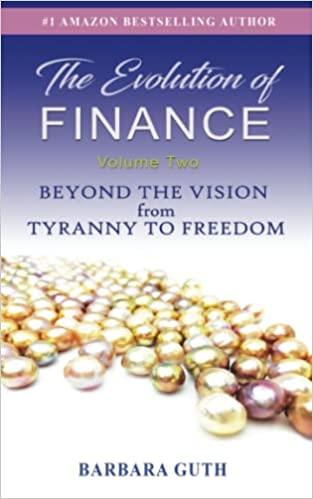Question
Mini-Case: Time Value of Money Adapted from Chapter 5 Mini-Case in Foundations of Finance Your task this week is to teach Grammy and the board
Mini-Case: Time Value of Money Adapted from Chapter 5 Mini-Case in Foundations of Finance Your task this week is to teach Grammy and the board the time value of money and its related concepts. She would like you to address several specific questions to demonstrate the use of time value of money techniques.
1. What is the relationship between discounting and compounding?
2. What is the relationship between the present-value factor and the annuity present-value factor?
3. What will $5,000 invested for 10 years at 8 percent compounded annually grow to? How many years will it take $400 to grow to $1,671 if it is invested at 10 percent compounded annually? At what rate would $1,000 have to be invested to grow to $4,046 in 10 years?
4. Calculate the future sum of $1,000, given that it will be held in the bank for 5 years and earn 10 percent compounded semiannually.
5. What is an annuity due? How does this differ from an ordinary annuity?
6. What is the present value of an ordinary annuity of $1,000 per year for 7 years discounted back to the present at 10 percent? What would be the present value if it were an annuity due?
7. What is the future value of an ordinary annuity of $1,000 per year for 7 years compounded at 10%? What would be the future value if it were an annuity due?
8. You have just borrowed $100,000, and you agree to pay it back over the next 25 years in 25 equal end-of-year payments plus 10 percent compound interest on the unpaid balance. What will be the size of these payments?
9. What is the present value of a $1,000 perpetuity discounted back to the present at 8 percent?
10. What is the present value of a $1,000 annuity for 10 years, with the first payment occurring at the end of year 10 (that is, ten $1,000 payments occurring at the end of year 10 through 19), given a discount rate of 10 percent?
11. Given a 10 percent discount rate, what is the present value of an perpetuity of $1,000 per year if the first payment does not begin until the end of year 10?
Step by Step Solution
There are 3 Steps involved in it
Step: 1

Get Instant Access to Expert-Tailored Solutions
See step-by-step solutions with expert insights and AI powered tools for academic success
Step: 2

Step: 3

Ace Your Homework with AI
Get the answers you need in no time with our AI-driven, step-by-step assistance
Get Started


